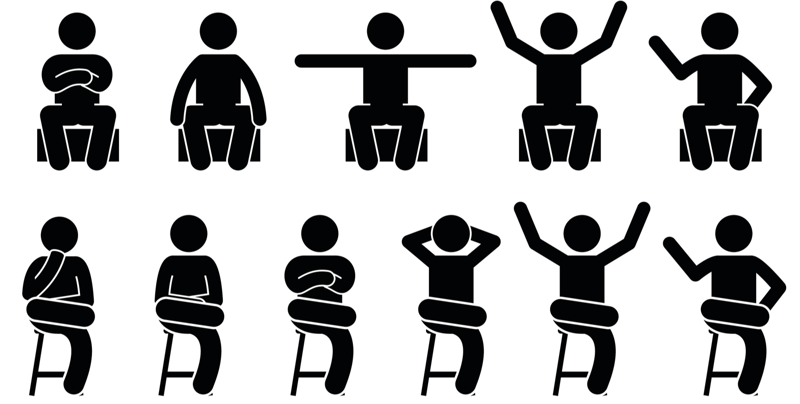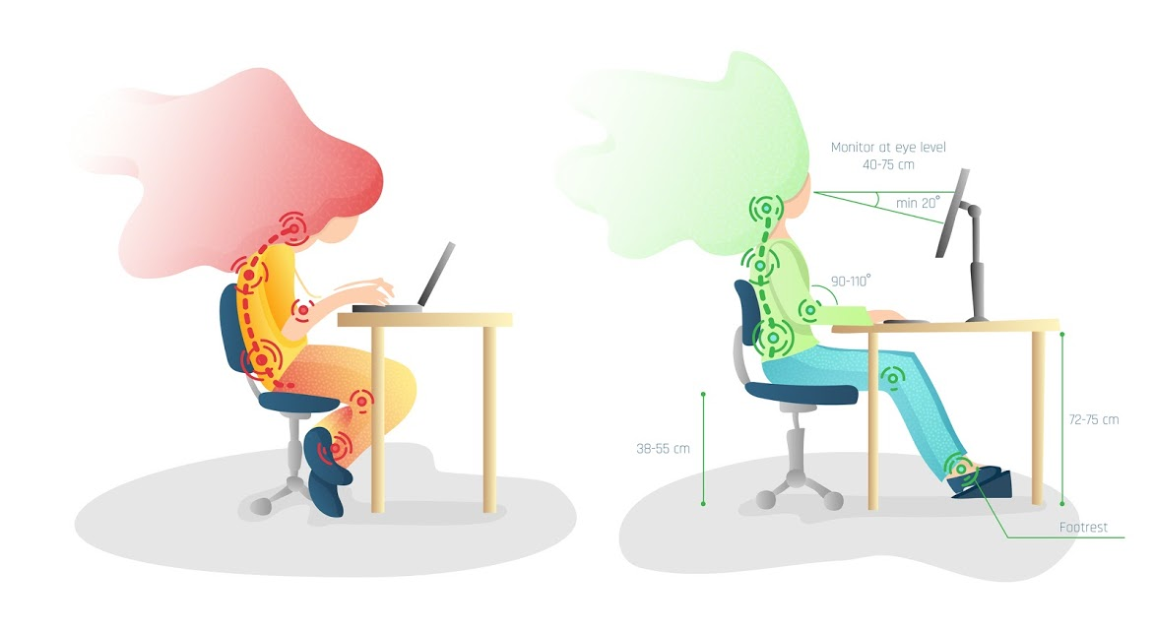
Recently, I had the opportunity to record my first podcast with James Crow of Posture Stars. Not only was it a lot of fun, but I was able to answer some important questions about posture. As a physical therapist and ergonomist, posture has come to mean different things to me when I observe and assess employees in the workplace. Did you know there are many kinds of postures?
Listen in to my thoughts on posture, it's significance in our daily work life and a bit of thoughtful advice for listeners.
James asked me the following questions:
1. What is posture?
2. What do you do to help people's posture?
3. If you could give one simple piece of posture advice for our listeners right now, what would that be?
You can listen to the podcast here. It's about 18 minutes long. I'm sure you'll improve your posture after hearing what I have to say, but I can't guarantee it'll be perfect!
Below is a summary to my responses if you prefer to read my posture message.
What is Posture?
Posture is the body’s efficient alignment of the musculoskeletal system. It is a balance between the muscles and joints. Posture is how human’s support themselves. Homo Erectus, or the “upright man” so to speak.
There are several types of postures: Good posture or neutral posture, bad posture which would be awkward or non-neutral or static, sustained; staying in a position for too long. Anatomical posture- the inherent design of the axial skeleton or head and spine as it changes through life. Anatomical posture is not something you can really control. It may be affected by something at birth, an injury, illness or disease process like a scoliosis or arthritis
Posture doesn’t just pertain to the spine, but it also pertains to the extremities or the appendicular skeleton. So our wrists have a posture, our shoulders, arms, legs, hips, etc.
Most people don’t realize it, but we have “working postures” while we perform tasks or activities at work or home. Posture is based on vision and reach. Where your eyes need to see a visual target, or see what your hands are doing, like typing on a keyboard or looking at a monitor. So, if the monitor or visual target is not centered to you, it will alter your posture. Because your head follows your eyes and your body follows your head. It’s like a chain reaction.
How Do I Help People's Posture?
As a physical therapist and ergonomist, I am acutely aware of peoples’ posture. I look at it all the time. Everywhere I go, literally!
The first thing is to be aware of your posture. Where is your body in space? Most people have very poor body awareness. I call this postural awareness.
For example, is your head in line with your shoulders or forward of your shoulders; is one shoulder higher than the other or both pressed upwards. Are you slouching or sitting forward of the chair backrest? Where are your legs, hips and buttocks? Are your feet on the floor?
The next thing I do is to help correct awkward or non-neutral postures, which goes back to the first thing I said. Correcting posture is rather complex. It depends on whether it is a functional and dynamic posture or a stationary posture. Sitting in a chair is a stationary posture, while lifting a box or moving a cart is a dynamic, functional posture, where there is movement.
People typically have poor postural habits. So, they move in the same way all the time, like bending the back instead of at the hips and knees, leaning to one side while sitting or over-reaching for things on a shelf.
I also help to find the best chair for people to use when seated at a computer. You could call me a "Chair Whisperer" in a sense. I can tell immediately how a chair fits or doesn’t fit someone, if they have bothered to adjust it correctly or not. I can assess the person by measuring them in sitting and use the measures to select a chair for the best match and fit possible. It’s called chair fitting.
My Posture Advice to Listeners and Readers
Sit, Stand, Move and Groove! Be mindful of your posture! To have posture awareness, particularly during stationary tasks and active, functional tasks.
It is easy to experience postural strain from over-reaching, or bending awkwardly or sitting unsupported for an extended period of time.
In addition, being aware of workstation ergonomics, placement of equipment is important as it predicates posture.
I like to say, if the chair isn’t right, then the ergonomics of the workstation will never be right, and neither will your posture! This leads to problems like musculoskeletal fatigue, tension, tightness and ultimately an injury. And it can manifest in many different places
Another expression many of us ergonomists like to say, is "your next posture is your best posture." In other words, the body is designed to move, so get up and move.
Recently there has been a lot of talk about sitting as being bad for your health, which it can definitely contribute to many physiological changes. Not just poor posture.
For this reason, I want your listeners to remember this:
Sit, Stand, Move and Groove. You have to do all of it through the course of your day. By doing so, you will be more mindful of your posture and improve your overall health.


Comments